Advertisements
Advertisements
Question
Find the missing values.
| Base | Height | Area |
| 17 mm | 221 sq.mm |
Solution
Given: Height h = 17 mm
Area of the parallelogram = 221 sq.mm
b × h = 221
b × 17 = 221
b = `221/17`
b = 13 m
Tabulating the results, we get
| Base | Height | Area |
| 13 m | 17 mm | 221 sq.mm |
APPEARS IN
RELATED QUESTIONS
DL and BM are the heights on sides AB and AD respectively of parallelogram ABCD (see the given figure). If the area of the parallelogram is 1470 cm2, AB = 35 cm and AD = 49 cm, find the length of BM and DL.
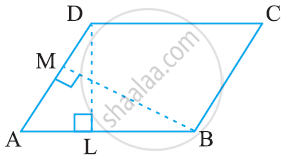
If base of a parallelogram is 18 cm and its height is 11 cm, find its area.
The base of the parallelogram is 16 cm and the height is 7 cm less than its base. Find the area of the parallelogram
The height of the parallelogram is one-fourth of its base. If the area of the parallelogram is 676 sq.cm, find the height and the base
In a parallelogram PQRS (See the diagram) PM and PN are the heights corresponding to the sides QR and RS respectively. If the area of the parallelogram is 900 sq.cm and the length of PM and PN are 20 cm and 36 cm respectively, find the length of the sides QR and SR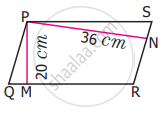
If the base and height of a parallelogram are in the ratio 7 : 3 and the height is 45 cm, then fixed the area of the parallelogram
Find the area of the parallelogram ABCD if AC is 24 cm and BE = DF = 8 cm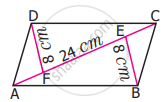
The area of the parallelogram ABCD is 1470 sq.cm. If AB = 49 cm and AD = 35 cm then, find the height, DF and BE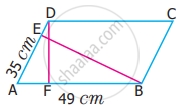
Observe the shapes 1, 2, 3 and 4 in the figures. Which of the following statements is not correct?
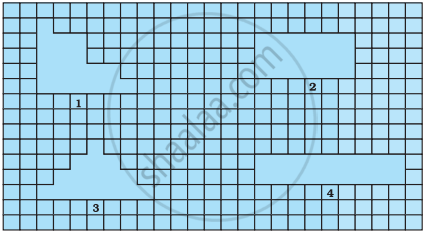
All parallelograms having equal areas have same perimeters.
